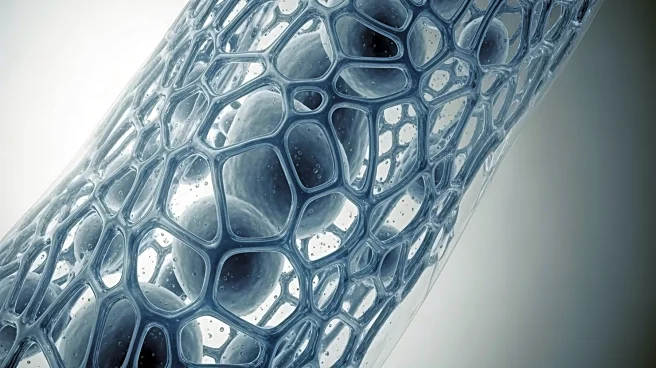What's Happening?
Researchers at the University of Basel and University Hospital Basel have developed a bone marrow model entirely from human cells, using human induced pluripotent stem cells and hydroxyapatite scaffolds.
This engineered vascularized osteoblastic niche (eVON) model aims to provide a realistic representation of human bone marrow, potentially reducing the reliance on animal models for research. The model is designed to mimic the human bone marrow's endosteal niche, which plays a crucial role in blood cell production and is significant in understanding blood cancers. The development of this model marks a step forward in personalized medicine, offering a platform for drug testing and disease modeling that closely resembles human biological processes.
Why It's Important?
The creation of a human cell-based bone marrow model is a significant advancement in medical research, offering a more accurate representation of human biology than traditional animal models. This development could lead to more effective drug testing and personalized therapies, particularly in the treatment of blood cancers. By providing a platform that closely mimics human bone marrow, researchers can gain deeper insights into the mechanisms of blood formation and disease progression, potentially leading to breakthroughs in treatment options. The model also highlights the potential for reducing animal testing in medical research, aligning with ethical considerations and advancing the field of regenerative medicine.











